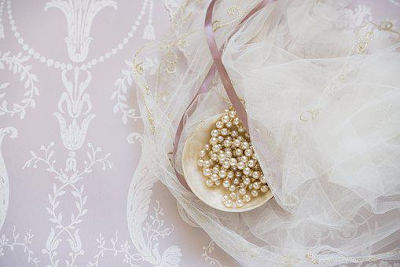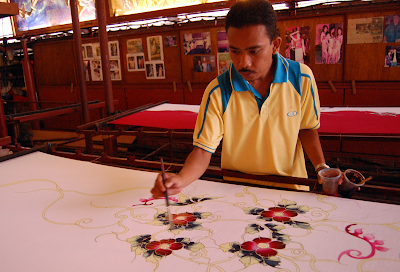Featured
- Get link
- X
- Other Apps
GIORGIO ARMANI
Giorgio Armani was born in 1934 in Piacenza, Italy, and is considered one of the most authoritative names in Italian ready-to-wear design.
He became well-known in the fashion world in 1957, when he left the University of Piacenza's medical school to work as a buyer for the La Rinascete chain in Milan.
Armani met Nino Cerruti, the proprietor of Hitman, an Italian men's clothing manufacturer, in 1964.
Cerruti urged Armani to entirely rethink the company's approach to apparel after a limited time of seeing how he worked with materials.
Armani collaborated with Cerruti for six years, designing a streamlined menswear line that could be mass-produced.
Armani met Sergio Galeotti in the late 1960s, which marked the start of a long-term partnership.
Galeotti convinced him to launch a design studio at 37 Corso Venezia in Milan in 1973.
Armani worked as a freelance designer for a variety of fashion businesses at this time, including Allegri, Bagutta, Hilton, Sicons, Gib, Monte doro, and Tendresse.
Following the runway shows at the Sala Bianca in Florence's Pitti Palace, the international press was quick to recognize Armani's importance.
Armani was able to expand his own style in new ways as a result of the experience.
He was now ready to focus his efforts on his own label, and he and his buddy Galeotti created Giorgio Armani Spa in Milan in 1975.
In October of the same year, he debuted his first men's ready-to-wear collection under his own brand for the spring and summer of 1976.
For the same season, he also created a women's collection.
Giorgio Armani's International Notoriety.
The secret to Armani's great success appears to be that he introduced, at the right time, a new approach to clothing design that reflected the changes in post-1968 society, which was primarily made up of a middle class that could no longer afford couture clothing but still desired to project a distinct image.
With this in mind, Armani established an innovative relationship with industry, exemplified by the 1978 agreement with Gruppo Financiario Tessile (GFT), which allowed the company's designer to produce luxury ready-to-wear in a manufacturing environment under his close supervision.
Armani started manufacturing for the United States in 1979, after establishing the Giorgio Armani Corporation, and introduced the Mani line for men and women in 1980.
With the introduction of several new product lines, such as G. A. Le Collezioni, Giorgio Armani Underwear and Swimwear, and Giorgio Armani Accessories, the label became one of the most recognizable names in international fashion.
The firm secured a key collaboration with L'Oréal to manufacture fragrances in the early 1980s, and the Armani Junior, Armani Jeans, and Emporio Armani lines were introduced, followed by Emporio Underwear, Swimwear, and Accessories in 1982.
In Milan, the Emporio line received a new shop, followed by the first Giorgio Armani boutique.
Armani's focus for the end user resulted in the creation of a younger product with the same degree of aesthetic excellence as his high-end brand, but at a more affordable price.
Armani felt compelled to adopt innovative and unusual promotional strategies due to the egalitarian aspect of the Emporio brand.
These featured television commercials and large street advertisements, as well as a home magazine that was sent to loyal Armani eaglet wearers.
Armani also believed that a connection to the film was necessary, both for promotional purposes and as a creative stimulation.
He created the costumes for Paul Schrader's 1980 film American Gigolo, which led to a long-term partnership with the film industry.
Armani designed costumes for almost a hundred films, the most famous of which being Brian De Palma's The Untouchables, which was released in 1987.
The designer's contract with GFT was updated in 1983.
They started producing both Mani's American brand and his high-end ready-to-wear line, rechristened Borgonuovo 21, after the company's headquarters location.
Despite Galeotti's death in 1985, Armani continued to extend business boundaries and licensing deals in the late 1980s.
He established Armani Japan and produced a range of eyewear (1988), socks (1987), a gift collection (1989), and A/X Armani Ex Change, a new "basic" men's and women's brand for America (1991).
After a flurry of investment activity in the 1990s (sportswear, eyeglasses, cosmetics, home, and new accessories collections), the year 2000, the brand's twenty-fifth anniversary, saw a flurry of stock sales and the acquisition of new manufacturing capacity, all aimed at increasing Armani's control over the quality and distribution of his products.
Giorgio Armani's Innovation and style.
It led to the development of apparel and accessories that sought for a clean, uncomplicated style that went beyond fashion and was intended to enhance the wearer's personality.
The first unstructured jackets for men, unlined and un-ironed, were released in 1976 as the result of years of expertise in industrial design.
They were meant to save labor costs and simplify fitting.
However, by introducing them, Armani established a third method in men's clothes, an alternative to English tailoring's conventional approach and the expectations associated with Italian made-to-measure clothing, creating an unprecedented synthesis between formal wear and loose, flexible athletics.
Armani granted men a new identity with the invention of the pullover blazer, which rejected conventional professional distinctions and enabled them to show themselves as youthful, attractive, and vaguely feminine.
For his radically unstructured garments, Armani was dubbed the "first postmodern designer" by several Italian newspapers.
Armani had simply softened men's wear and made women's wear more concise and modern, transforming changing social roles into a "Armani look," making the casual look authoritative.
Official acknowledgement of his celebrity occurred in 1982, when he was the second fashion designer, after Christian Dior, to appear on the cover of Time magazine.
Armani has liberated ladies from rigid clothes by creating soft coats with no necks and comfortable bottoms.
These outfits greatly enhanced a type of femininity that, because it was not ostentatious, was ultimately more real.
Although they were initially somewhat severe, as if they tended to assist women in their climb to professional credibility, these outfits greatly enhanced a type of femininity that, because it was not ostentatious, was ultimately more real.
Armani wanted to create a lady who was powerful but not harsh (think Greta Garbo and Marlene Dietrich in current clothing), and who could be functional and essential as well as gorgeous.
The jacket has remained the focal point of the Armani wardrobe throughout time, evolving year after year via the use of new fabrics, sizes, and colors.
Armani's 1997 "greige" (a mix of gray and beige) remained the most common element in a palette dominated by white and black, gentle earth tones, hazy blues, and occasional surprise bursts of color.
The quest for materials has always been a distinguishing feature of Armani's men's and women's collections, and it became a fundamental design element in 1986, alongside embroidery and the return to evening wear that he pioneered.
The style was valuable and unique, but always in a minimalist tone, with the usage of low-heeled shoes or sneakers demystifying the appearance.
Armani's clothes has never been a jumble of mundane notions, since he is a keen observer of previous civilizations and Eastern influences.
Throughout his career, he has consistently succeeded in presenting fresh visions of how men and women dress, as well as transforming exquisite, ornamental patterns into a distinct yet approachable style.
See also:
Film and Fashion; Italian Fashion; Jacket; Ready to-Wear; Sports Jacket.
References And Further Reading:
Bianchino, Gloria, and Arturo Carlo Quintavalle. Moda: Dalla fiaba al design italia 1951–1989. Novara, Italy: De Agostini, 1989.
Bucci, Ampelio. Moda a Milano: Stile e impresa nella città che cambia. Milan: Abitare Segesta, 2002.
Celant, Germano, and Harold Koda, eds. Giorgio Armani. New York: Guggenheim Museum Publications, 2000.
Sollazzo, Lucia. “Armani, Giorgio.” In Dizionario della moda. Edited by Guido Vergani. Milan: Baldini and Castoldi, 1999.
White, Nicola. Giorgio Armani. London: Carlton, 2000.
- Get link
- X
- Other Apps













